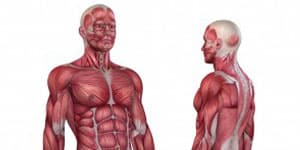Anthropometrics of elite rowers has been extensively studied. Many researchers, including Secher and Vaage (1983) and De Rose et al. (1989) emphasize the importance of body mass and body size for rowing performance. However, no specific anthropometric profile for junior rowers has been created.
Bourgois et al. (2000) conducted a comprehensive study with 383 of 430 male participants of 1997 World Junior Rowing Championships. 27 dimensions were measured: body mass, six heights or lengths, four breadths, ten girths, and six skinfolds.
The results were analyzed and compared with the national representative sample of Belgian boys of the same age to chart the anthropometric profile of junior rowers. The elite junior rowers were taller (187.4 (5.8) vs. 175.4 cm; mean (SD)) and heavier (82.2 (7.4) vs. 64.7 kg; mean (SD)) with larger body dimensions at almost every dimension measured. Significant differences were also found in 14 dimensions between finalists and non-finalists. All data can be found in tables 1, 2 and 3.
What to learn from this?
An average successful junior rower is relatively tall and heavy, and with a strong body build. The data in the presented tables can be used by coaches to profile their own athletes.
| Table 1. Descriptive anthropometric characteristics for male junior rowers compared with Belgian reference data | ||||
| Male junior rowers (n=383) | Belgian median (n=1098) | |||
| Dimension | Mean | SD | Range | |
| Body mass (kg) | 82.2 | 7.4 | 60.0–108.1 | 64.7 |
| Stature (cm) | 187.4 | 5.8 | 167.6–201.5 | 175.4 |
| Sitting height (cm) | 96.8 | 3.2 | 87.5–106.7 | 91.4 |
| Leg length (cm) | 90.7 | 3.8 | 78.3–99.1 | 84.0 |
| Arm length (cm) | 82.9 | 3.3 | 71.6–92.6 | — |
| Biacromial diameter (cm) | 41.5 | 1.7 | 37.0–48.7 | 39.1 |
| Bicristal diameter (cm) | 30.3 | 1.6 | 26.2–39.1 | — |
| Humerus width (cm) | 7.6 | 0.3 | 6.4–8.6 | 7.0 |
| Femur width (cm) | 10.3 | 0.6 | 8.7–18.2 | 9.6 |
| Biceps girth (cm)* | 32.9 | 1.9 | 27.4–40.0 | 28.1 |
| Upper arm girth (cm)† | 29.8 | 1.9 | 24.1–36.3 | — |
| Forearm girth (cm) | 28.6 | 1.3 | 24.3–33.3 | — |
| Thigh girth (cm) | 57.9 | 3.3 | 48.5–68.2 | 51.3 |
| Calf girth (cm)‡ | 37.7 | 1.9 | 32.8–44.8 | 34.9 |
| Biceps skinfold (mm) | 3.9 | 1.0 | 2.0–9.3 | — |
| Triceps skinfold (mm) | 7.9 | 2.2 | 3.8–15.9 | 6.8 |
| Subscapular skinfold (mm) | 8.9 | 1.6 | 5.7–16.5 | 8.3 |
| Suprailiac skinfold (mm) | 6.6 | 2.2 | 3.5–18.0 | 7.7 |
| Thigh skinfold (mm) | 11.5 | 3.8 | 5.0–25.7 | — |
| Calf skinfold (mm) | 8.4 | 3.0 | 3.2–21.5 | — |
| *Maximum girth of the tensed upper arm (maximum flexed); †midway between acromium and olecranon, arm relaxed; ‡maximum girth. —, data not available. | ||||
| Bourgois et al. 2000 | ||||
| Table 2. Independent two sample t test summary of by performance: finalists (n=144) versus non-finalists (n=222). | |||
| Dimension | Finalists (n=144) | Non-finalists (n=222) | p |
| Body mass (kg) | 84.8 (7.1) | 80.6 (7.0) | <0.01 |
| Stature (cm) | 189.3 (5.0) | 186.3 (6.1) | <0.01 |
| Sitting height (cm) | 97.6 (2.9) | 96.2 (3.3) | <0.01 |
| Leg length (cm) | 91.6 (3.5) | 90.1 (4.0) | <0.01 |
| Arm length (cm) | 83.7 (3.0) | 82.4 (3.4) | <0.01 |
| Biacromial diameter (cm) | 41.9 (1.6) | 41.3 (1.7) | <0.01 |
| Humerus width (cm) | 7.7 (0.3) | 7.6 (0.3) | <0.01 |
| Femur width (cm) | 10.4 (0.5) | 10.2 (0.5) | <0.01 |
| Biceps girth (cm)* | 33.5 (1.8) | 32.6 (1.9) | <0.01 |
| Upper arm girth (cm)† | 30.4 (1.8) | 29.6 (1.9) | <0.01 |
| Forearm girth (cm) | 29.1 (1.2) | 28.2 (1.3) | <0.01 |
| Thigh girth (cm) | 58.7 (3.4) | 57.5 (3.2) | <0.01 |
| Calf girth (cm)‡ | 38.1 (1.9) | 37.5 (1.9) | <0.01 |
| Triceps skinfold (mm) | 7.5 (1.9) | 8.2 (2.3) | <0.01 |
| Values are mean (SD). *Maximum girth of the tensed upper arm (maximum flexed); †midway between acromium and olecranon, arm relaxed; ‡maximum girth. | |||
| Bourgois et al. 2000 | |||
| Table 3 Anthropometric profile chart for male junior rowers (n=383) | |||||||
| Percentiles | |||||||
| Body dimension | 5 | 10 | 25 | 50 | 75 | 90 | 95 |
| Body mass (kg) | 69.8 | 73.0 | 77.2 | 81.9 | 87.0 | 92.3 | 94.7 |
| Stature (cm) | 177.3 | 179.2 | 183.6 | 187.6 | 191.4 | 195.2 | 196.6 |
| Sitting height (cm) | 91.5 | 92.7 | 94.5 | 96.7 | 98.9 | 100.8 | 102.3 |
| Leg length (cm) | 84.4 | 85.3 | 88.1 | 90.8 | 93.3 | 95.9 | 97.3 |
| Arm length (cm) | 77.7 | 78.5 | 80.8 | 83.0 | 85.2 | 87.0 | 88.4 |
| Biacromial diameter (cm) | 38.6 | 39.4 | 40.4 | 41.5 | 42.5 | 43.5 | 44.2 |
| Bicristal diameter (cm) | 27.9 | 28.4 | 29.3 | 30.2 | 31.1 | 32.2 | 33.0 |
| Humerus width (cm) | 7.1 | 7.2 | 7.4 | 7.6 | 7.8 | 8.0 | 8.2 |
| Femur width (cm) | 9.6 | 9.8 | 10.0 | 10.3 | 10.6 | 11.0 | 11.1 |
| Biceps girth (cm) | 29.7 | 30.5 | 31.6 | 33.1 | 34.3 | 35.3 | 35.8 |
| Upper arm girth (cm) | 26.6 | 27.3 | 28.5 | 30.0 | 31.2 | 32.1 | 32.8 |
| Forearm girth (cm) | 26.5 | 27.0 | 27.6 | 28.5 | 29.5 | 30.3 | 30.7 |
| Thigh girth (cm) | 52.7 | 53.8 | 55.5 | 58.0 | 60.2 | 62.0 | 63.4 |
| Calf girth (cm) | 34.4 | 35.1 | 36.6 | 37.8 | 39.0 | 40.0 | 40.7 |
| Biceps skinfold (mm) | 2.7 | 2.9 | 3.2 | 3.6 | 4.4 | 5.4 | 5.9 |
| Triceps skinfold (mm) | 5.0 | 5.3 | 6.3 | 7.7 | 9.1 | 10.7 | 12.1 |
| Subscap. skinfold (mm) | 6.6 | 7.1 | 7.8 | 8.7 | 9.6 | 10.9 | 11.5 |
| Suprailiac skinfold (mm) | 4.3 | 4.6 | 5.1 | 6.1 | 7.6 | 9.5 | 10.5 |
| Thigh skinfold (mm) | 6.5 | 7.1 | 8.7 | 10.9 | 13.6 | 16.4 | 18.0 |
| Calf skinfold (mm) | 4.8 | 5.3 | 6.3 | 7.8 | 9.9 | 12.5 | 14.2 |
| Bourgois et al. 2000 | |||||||
Source
Bourgois J, Claessens AL, Vrijens J, Philippaerts R, Van Renterghem B, Thomis M, Janssens M, Loos R, Lefevre J. Anthropometric characteristics of elite male junior rowers. British Journal of Sports Medicine 2000; 34: 213-217.
De Rose EH, Crawford SM, Kerr DA, et al. Physique characteristics of Pan American Games lightweight rowers. International Journal of Sports Medicine 1989; 10: 292–297.
Secher NH, Vaage O. Rowing performance, a mathematical model based on analysis of body dimensions as exemplified by body weight. European Journal of Applied Physiology 1983; 52: 88–93.

